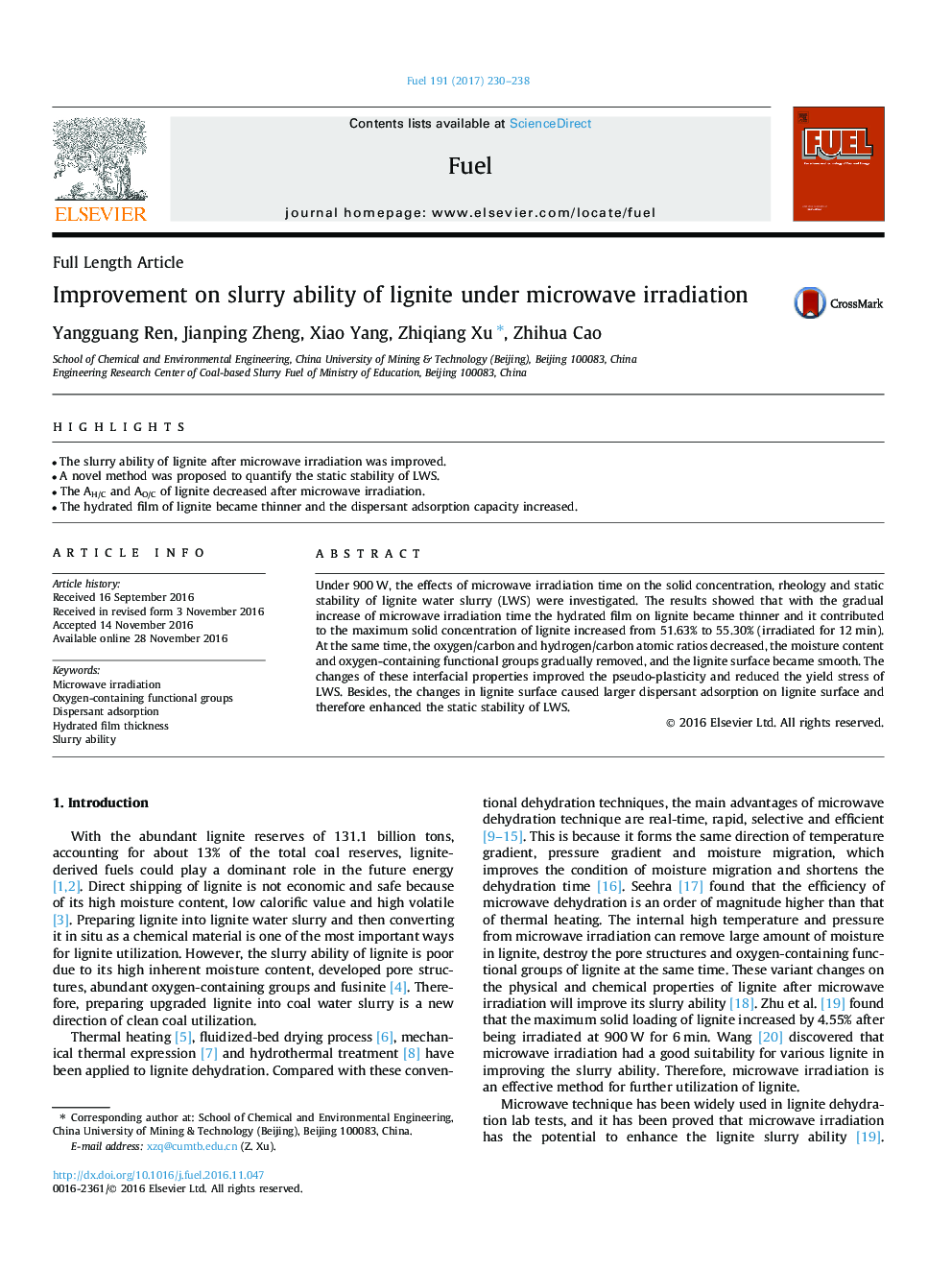| Article ID | Journal | Published Year | Pages | File Type |
|---|---|---|---|---|
| 4768767 | Fuel | 2017 | 9 Pages |
Abstract
Under 900Â W, the effects of microwave irradiation time on the solid concentration, rheology and static stability of lignite water slurry (LWS) were investigated. The results showed that with the gradual increase of microwave irradiation time the hydrated film on lignite became thinner and it contributed to the maximum solid concentration of lignite increased from 51.63% to 55.30% (irradiated for 12Â min). At the same time, the oxygen/carbon and hydrogen/carbon atomic ratios decreased, the moisture content and oxygen-containing functional groups gradually removed, and the lignite surface became smooth. The changes of these interfacial properties improved the pseudo-plasticity and reduced the yield stress of LWS. Besides, the changes in lignite surface caused larger dispersant adsorption on lignite surface and therefore enhanced the static stability of LWS.
Related Topics
Physical Sciences and Engineering
Chemical Engineering
Chemical Engineering (General)
Authors
Yangguang Ren, Jianping Zheng, Xiao Yang, Zhiqiang Xu, Zhihua Cao,
